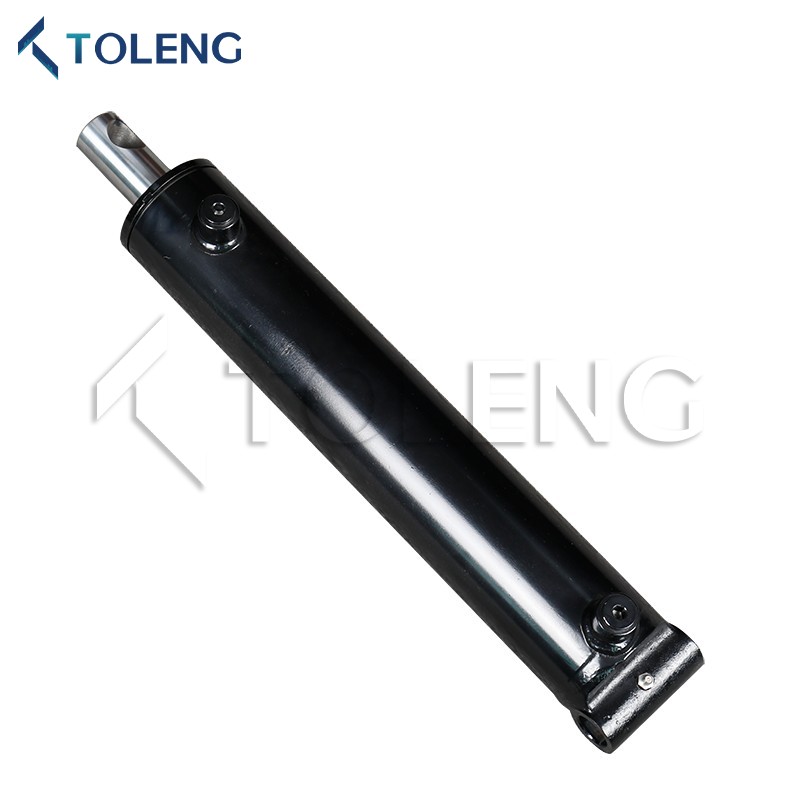Why Are Standard Hydraulic Cylinders Essential in Industrial Applications?
2024-12-31
When it comes to powering heavy machinery and industrial systems, hydraulic cylinders are an indispensable component. But what makes standard hydraulic cylinders so crucial for various industries, and why are they often the go-to choice for many applications? Let’s explore the role and benefits of these hydraulic powerhouses.
What Is a Standard Hydraulic Cylinder?
A standard hydraulic cylinder is a mechanical actuator used to provide linear motion and force in hydraulic systems. These cylinders use pressurized hydraulic fluid to produce movement, making them highly efficient and capable of handling heavy loads. Standard hydraulic cylinders are commonly found in applications where consistent, powerful motion is required, such as construction, manufacturing, and automotive industries.
Why Are Standard Hydraulic Cylinders So Important?
Standard hydraulic cylinders offer several key advantages that make them a preferred choice for many industries:
1. High Power-to-Size Ratio
- Hydraulic cylinders are capable of delivering impressive amounts of force relative to their size. This high power-to-size ratio makes them ideal for applications that require compact yet powerful machinery.
2. Smooth and Precise Control
- The use of hydraulic fluid allows for smooth, precise, and easily controlled motion. This is especially important in systems where accuracy and fine adjustments are needed, such as in manufacturing or automotive assembly lines.
3. Durability and Reliability
- Hydraulic cylinders are designed to withstand high pressures and extreme conditions. With proper maintenance, they can operate for years, providing reliable performance in heavy-duty applications.
4. Versatility
- Available in a wide range of sizes, designs, and configurations, standard hydraulic cylinders can be customized to fit a variety of applications, from lifting and pushing to pressing and pulling.
5. Cost-Effectiveness
- Compared to electric or pneumatic alternatives, hydraulic cylinders are often more cost-effective, especially in applications that require heavy lifting or continuous motion.
Where Are Standard Hydraulic Cylinders Used?
Standard hydraulic cylinders are employed across numerous industries, including:
- Construction: In excavators, bulldozers, and cranes, hydraulic cylinders are used to lift, dig, and move large loads.
- Manufacturing: Hydraulic cylinders are commonly used in presses, injection molding machines, and other industrial machinery.
- Automotive: Found in car lifts, presses, and suspension systems, hydraulic cylinders are essential for many vehicle manufacturing processes.
- Agriculture: Hydraulic cylinders power equipment like tractors, harvesters, and plows, enabling efficient farming operations.
- Aerospace: Used in landing gear systems and other aircraft components, hydraulic cylinders provide reliable motion and force.
What Are the Key Components of a Hydraulic Cylinder?
While designs can vary, most standard hydraulic cylinders share common components:
- Cylinder Barrel: The outer casing that houses the piston and hydraulic fluid.
- Piston: A key component that moves within the cylinder, transferring hydraulic force to mechanical motion.
- Rod: Extends from the piston and delivers the force to the load.
- End Caps: Seals that contain the hydraulic fluid and prevent leakage.
- Seals and Bearings: Ensure smooth operation and prevent wear and tear, keeping hydraulic fluid contained.
Are There Any Challenges with Standard Hydraulic Cylinders?
Despite their numerous benefits, there are some challenges associated with hydraulic cylinders:
- Maintenance Requirements: Regular maintenance is required to prevent leakage, corrosion, and wear.
- Space Constraints: Hydraulic cylinders may be larger than other actuation systems, making them less suitable for compact or constrained spaces.
- Fluid Contamination: Contaminated hydraulic fluid can damage the cylinder and the entire hydraulic system, so proper filtration is crucial.
Conclusion
Standard hydraulic cylinders play an essential role in powering machinery and systems across a variety of industries. Their reliability, efficiency, and ability to deliver substantial force in a compact design make them indispensable for tasks ranging from heavy lifting to precise, high-speed motion.
By understanding the importance and application of standard hydraulic cylinders, industries can maximize their potential and ensure the smooth operation of critical machinery.



